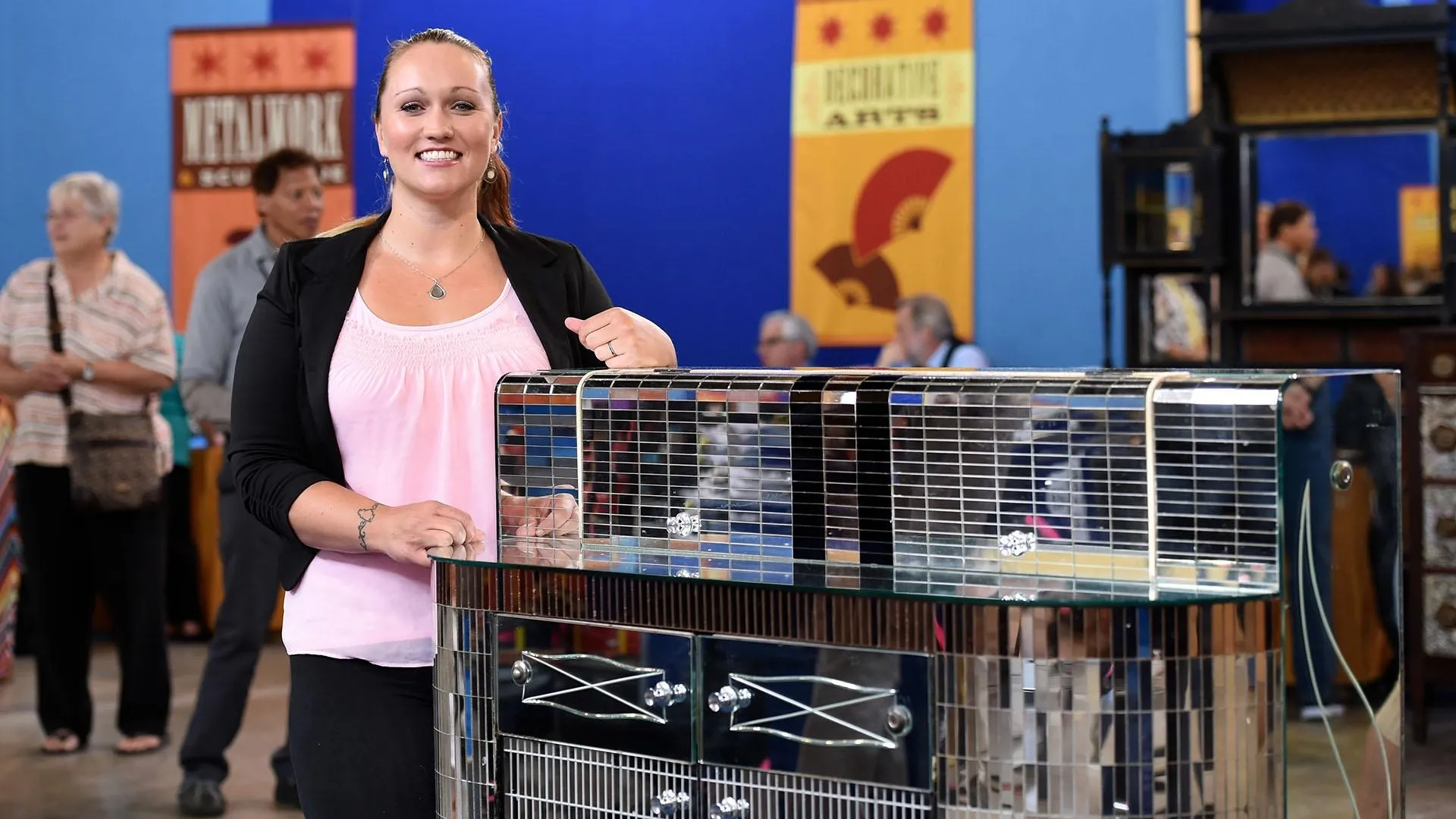GUEST: So there's an estate sale company out of the Northeast that seems to dabble in art, and they found a whole bunch of pop art, and this was one of the pieces they found. Didn't seem to know anything about it, but I kind of fell in love with it.
APPRAISER: It's a plywood box, and the label says... "Suicide."
GUEST: "Suicide."
APPRAISER: And inside, we have an image of flamingos and these wrapped scissors.
GUEST: Correct.
APPRAISER: Was there any signature on this?
GUEST: Not that we saw. I just thought it was really kitschy and neat. I mean, it just was clearly some sort of folk art and interesting, and my wife was not pleased when we brought it into the house.
APPRAISER: Well, we believe this artist is H.C. Westermann. Horace Westermann was born in L.A. in 1922. He's hard to classify. He's a folk artist, a Surrealist. He called himself an Americanist. He was a gunner in combat, and the military had a profound effect on him. He came back and went to the Art Institute of Chicago, and exhibited quite a lot here in this local area. One of his techniques, because he was originally a carpenter, was to use this kind of plywood, so that's kind of a real giveaway as to his work. He normally had a very pop culture theme to things, so the kitschy flamingos being 1950s kind of pop icon, and possibly the scissors having some sort of military reference. Hard to say. He was often asked what does his work mean, and he would say, "Heck if I know." It's really hard to classify something like this, but certainly it would fall into the category of fine art sculpture at this point. This would be from the period in Westermann's work around 1960. It is something that would have to be checked out. The Museum of Contemporary Art here in Chicago wrote the catalogue raisonné on this artist, and the Whitney and they have had many exhibits of his work. So it would be something that, right now, we would consider sort of an attribution to him. But his work is very, very popular. Do you have any idea of what its value is, or what did you pay for it?
GUEST: I paid I think $150 for it. I think we assumed the value was zero, and so anything above that would be a shocker.
APPRAISER: So, if it is an homage to Westermann, I would still say it's probably got a value of around $2,000, because there's so much work and it's such an interesting thing. If this thing checks out, and I think it well should, it would be valued between $20,000 and $30,000.
GUEST: Wow, wow, that's unreal, unreal.
APPRAISER: And the high water mark for this gentleman is about $125,000 on the secondary market at auction.
GUEST: Wow.











